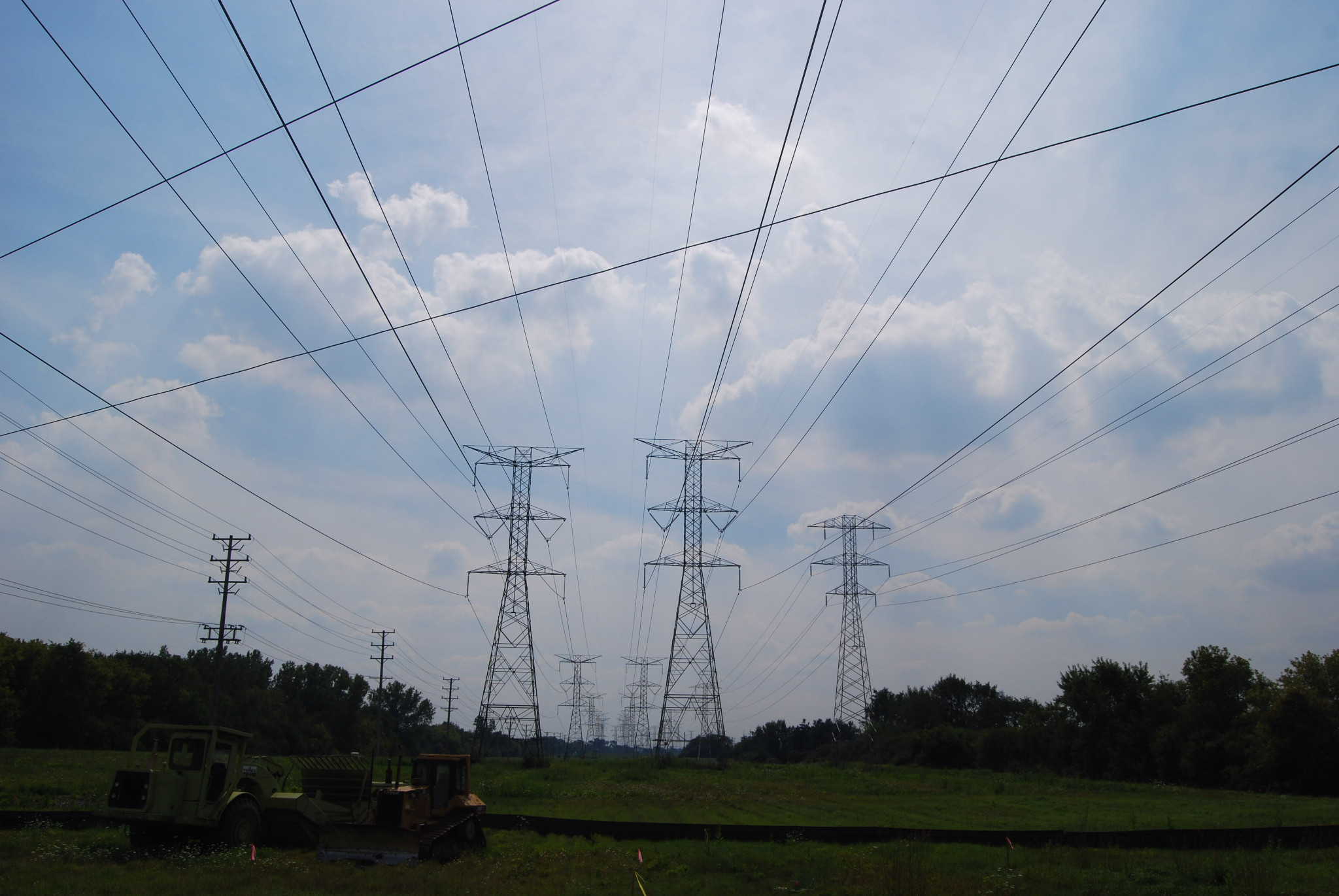 Image of High Voltage Powerlines Near Fermilab by Michael Kappel
Image of High Voltage Powerlines Near Fermilab by Michael Kappel
American Electric Transmission Regulations Inhibit the Energy Transition
A recent study in the National Science Review has discovered that natural land-based carbon sinks have almost completely stopped net absorbing carbon from the atmosphere. Many climate models rely on natural carbon sinks such as forests and swamps to meet net-zero emissions commitments, so the collapse of these systems could spell disaster for climate goals. In light of this, faster and larger deployments of renewable energy will be necessary to combat climate change. As the nation increasingly relies on renewable energy, electricity transmission will be of central importance to ensuring the lights stay on for Americans. America’s devolved transmission regulatory regime jeopardizes U.S. energy security due to the spatial differences between renewable capacity and load growth, overlapping jurisdiction and regulation, and the susceptibility of local and state politics to outside influence.
Currently, 2600 gigawatts of generation capacity are currently paused in interconnection queues, awaiting permitting by regulators. Around 95% of this capacity comes from renewable energy sources. For reference, the current generation capacity of the entire United States is about 1300 gigawatts. This backlog has not gone unnoticed by U.S. policymakers. Senator Joe Manchin has introduced a bill that would increase federal control over the transmission and interconnection permitting and construction process. The bill seeks to speed up the permitting process for energy and critical mineral projects by increasing the scope of federal powers to grant permits. Additionally, the Department of Energy (DOE) has given grants to various projects that aim to quicken the pace of interconnection. GridUnity’s Digital Integration for Grid Interconnection Tools, Analysis, and Logic facilitates the documentation process and communication between energy project developers and transmission regulators.
One central issue to the United States’s energy transition is its geography. Much of the future energy consumption in the U.S. is projected to come from the southeast and mid-Atlantic regions. Data centers and advanced manufacturing development are some of the largest drivers of this load growth. Despite this, U.S. renewable energy capacity is highest in the middle of the country, particularly the Great Plains. Transmission and interconnection will be vital to ensure that electricity can flow between these regions and ensure that infrastructure stays functional.
The permitting and regulations for a project seeking to link high renewable capacity regions with the regions facing the highest demand are controlled by states and municipalities, each with different requirements. The current permitting regime of the United States can only establish federal control over permitting if the project resides in a National Interest Electric Transmission Corridor (NIETC). The creation of an NIETC is a long, bureaucratic process that is too slow for the needs of the energy transition. Even if an interconnection project does not cross state boundaries, developers must contend with overlapping regulations and jurisdictions that inhibit development. Developers have to hold community meetings to reach public consensus for siting, and since many local and state agencies and organizations act independently, developers have to meet documentation and permitting requirements from each organization individually.
State and local politics are also much more susceptible to status quo bias. In the U.S., NIMBYism at the local level is a major prohibitor to new development, and energy development projects are no different. At the state level, Great Plains states such as North Dakota and Wyoming have entrenched oil, gas, and coal interests that seek to block renewable development. For example, Wyoming currently has a tax on wind energy production and attempts to increase the tax by more than an order of magnitude only narrowly failed in the latest legislative session. While the Federal government is also susceptible to outside interests, it can have a much broader perspective on policy and development strategies that impact the entire country.
Senator Manchin’s bill takes steps to reform this current system, but more drastic action is needed given the national scale of the climate change crisis and the accelerating transition to clean energy. Further federal control over energy permitting and transmission regulation would help alleviate the undue regulatory burden placed on energy developers and allow necessary energy projects to be constructed. A rapid and reliable energy transition requires effective transmission infrastructure, infrastructure that is currently trapped in a byzantine bureaucracy.
Click here to access the featured image license





